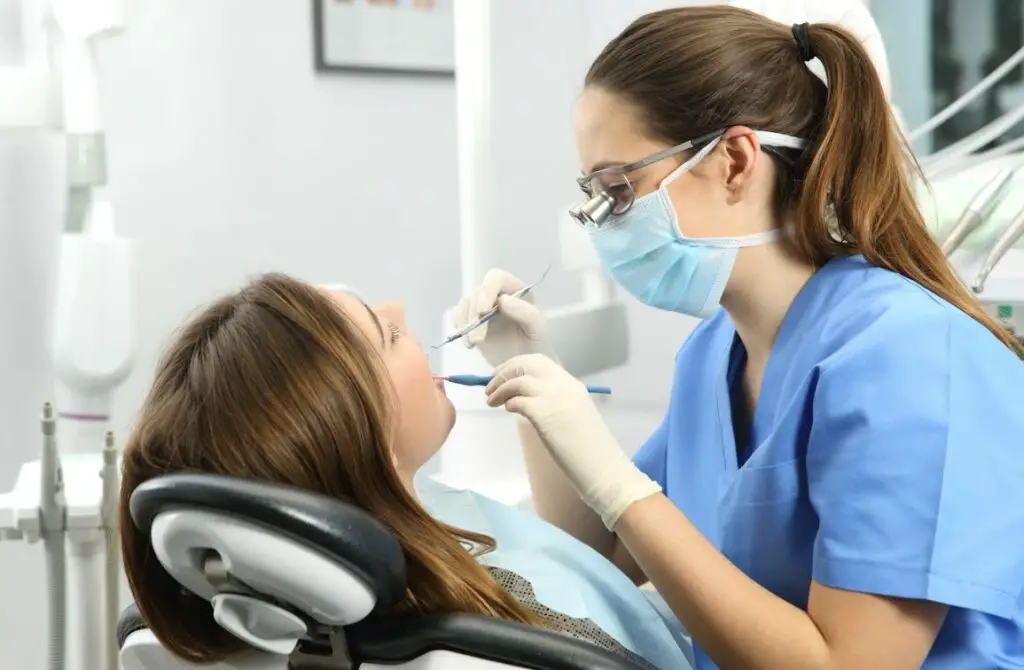Good dental hygiene is essential for overall health and well-being. Regular brushing, flossing, and other routine dental procedures are necessary to prevent cavities, gum disease, bad breath, and more severe conditions such as heart attack or stroke caused by untreated oral problems.
Properly caring for one’s teeth also prevents the need for costly restorative treatments later on in life. Visiting a dentist regularly helps to identify potential issues early on before they become more significant problems.
Dental cleaning helps remove tartar build-up that regular brushing cannot reach. It allows for better teeth cleaning at home, resulting in improved smile aesthetics and increased confidence. This article will briefly overview four routine dental procedures that can be used as preventative measures against common oral health issues.
Cleaning And Scaling
The process of dental scaling and cleaning is essential for the maintenance of oral health. The procedure begins with a hygienist using special instruments to scrape away plaque and tartar from above and below the gum line while polishing teeth to remove any remaining build-up.
It’s important to note that root planing may be necessary if the gum disease has progressed past the early stage, as it involves smoothing out the roots of teeth to help gums reattach. Dental scaling can be uncomfortable but should not cause pain or discomfort beyond what one might experience during a regular check-up.
Moreover, this procedure offers several benefits, such as removing bacteria and tartar build-up, preventing gum disease, and preserving oral hygiene. Furthermore, research suggests that individuals who receive routine dental cleanings have fewer cavities than those who don’t get them regularly.
Regular visits to the dentist are recommended to maintain good oral health; these visits are beneficial for diagnosing potential problems before they progress into more severe issues requiring treatment. Professional deep cleanings can identify signs of periodontal disease or tooth decay, which can be addressed quickly and effectively with proper care.
For optimal health outcomes, brushing twice daily and flossing once per day are highly encouraged, in addition to professional cleanings every six months.
Teeth Whitening
Teeth whitening is a popular cosmetic dental procedure done by the dentist or at home. It uses hydrogen peroxide to break apart stain compounds and cause oxidation, resulting in lighter teeth shades. Depending on the system used, professional teeth whitening may require multiple gel applications within 40 minutes for four to six shades of whitening after one session.
Although there are benefits associated with this process, it’s not recommended for patients with active gum disease, untreated tooth decay, hypersensitive teeth, excessive erosion or gum recession, or tooth-colored restorations across their front teeth due to its potential side effects, such as sensitivity.

Potential candidates should consult their dentist before pursuing any treatment.
Fillings
Dental fillings are among the most common and effective treatments for restoring a healthy smile. They can repair minor fractures or decay in teeth, even out the tooth’s surface, improve function when biting or chewing, and provide aesthetically pleasing results.
The procedure begins with an inspection by the dentist followed by local anesthetic to numb the area around the affected tooth before removing decayed tissue and filling it with materials such as composite resin or amalgam.
Post-procedure, there may be some lingering numbness but generally no significant risks associated with this treatment; however, patients should retain their dentist’s contact information just in case. By removing unhealthy meals and pursuing a healthier lifestyle, your healthy smile and dental filling can last for many more years.
Root Canal Treatment
It’s a standard dental procedure that can save teeth from infection. It involves removing the infected pulp, cleaning and disinfecting the inside of the tooth, filling and sealing it, and then capping it with a crown for protection.
Innovations in dentistry have made root canals less uncomfortable and more efficient than ever. It makes them an ideal solution for patients suffering from significant inflammation or infection in the pulp chamber of their teeth.
The procedure begins with local anesthesia, so the patient feels no pain during the entire process. A rubber dam is placed around the affected tooth to keep it dry throughout the operation. Endodontic instruments such as files and reamers remove the decayed material from within the root canal system.
After removing all debris, they will be cleaned using antiseptic solutions until completely sterile. Finally, a temporary filling will be put in place, while your dentist may recommend a permanent restoration like a crown depending on how much damage there was to your tooth structure.
The success rate for root canals is relatively high when performed correctly, making it one of the most effective ways to treat severe infections or decay in teeth without having to extract them entirely.
Patients usually experience some soreness after treatment, but this should subside over time as long as proper oral hygiene habits are practiced. Root canal therapy also helps preserve natural teeth, which can last many years if cared for properly.
Takeaway
Maintaining a healthy smile is an integral part of overall health. Regular dental procedures such as cleaning and scaling, teeth whitening, fillings, and root canal treatment can help to keep teeth strong and attractive. Cleaning helps to remove built-up plaque on the surface of the teeth, while scaling removes deposits from underneath the gum line.
Teeth whitening brightens discolored teeth for a more aesthetically pleasing smile. Fillings restore cavities damaged by decay, and root canal therapy saves badly infected teeth that would otherwise need extraction. With proper care, including regular dental visits and routine procedures, anyone can enjoy good oral hygiene now and in years to come.


